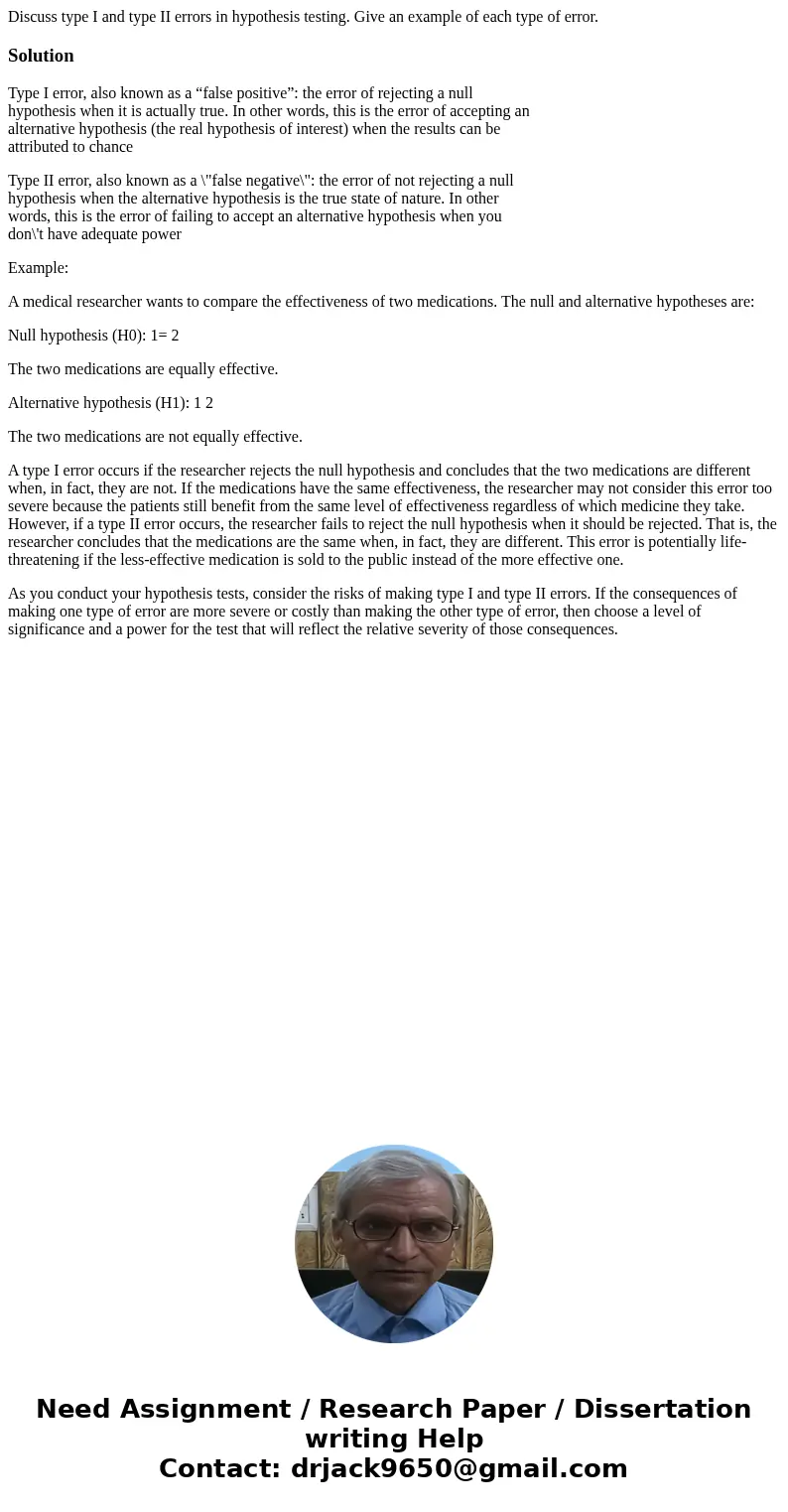Discuss type I and type II errors in hypothesis testing Give
Discuss type I and type II errors in hypothesis testing. Give an example of each type of error.
Solution
Type I error, also known as a “false positive”: the error of rejecting a null
hypothesis when it is actually true. In other words, this is the error of accepting an
alternative hypothesis (the real hypothesis of interest) when the results can be
attributed to chance
Type II error, also known as a \"false negative\": the error of not rejecting a null
hypothesis when the alternative hypothesis is the true state of nature. In other
words, this is the error of failing to accept an alternative hypothesis when you
don\'t have adequate power
Example:
A medical researcher wants to compare the effectiveness of two medications. The null and alternative hypotheses are:
Null hypothesis (H0): 1= 2
The two medications are equally effective.
Alternative hypothesis (H1): 1 2
The two medications are not equally effective.
A type I error occurs if the researcher rejects the null hypothesis and concludes that the two medications are different when, in fact, they are not. If the medications have the same effectiveness, the researcher may not consider this error too severe because the patients still benefit from the same level of effectiveness regardless of which medicine they take. However, if a type II error occurs, the researcher fails to reject the null hypothesis when it should be rejected. That is, the researcher concludes that the medications are the same when, in fact, they are different. This error is potentially life-threatening if the less-effective medication is sold to the public instead of the more effective one.
As you conduct your hypothesis tests, consider the risks of making type I and type II errors. If the consequences of making one type of error are more severe or costly than making the other type of error, then choose a level of significance and a power for the test that will reflect the relative severity of those consequences.

 Homework Sourse
Homework Sourse